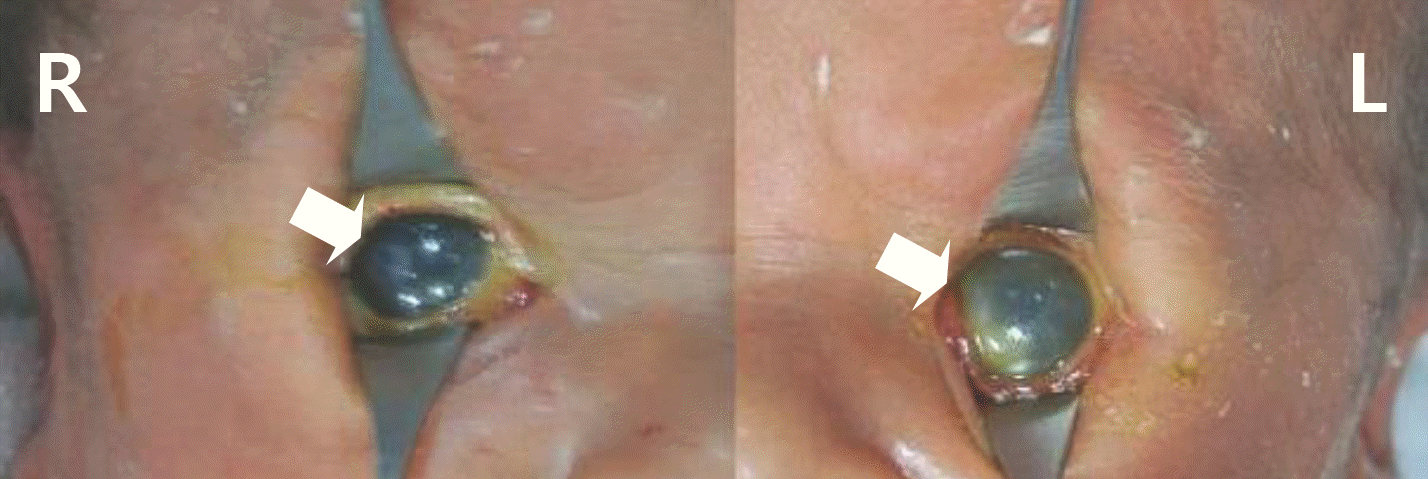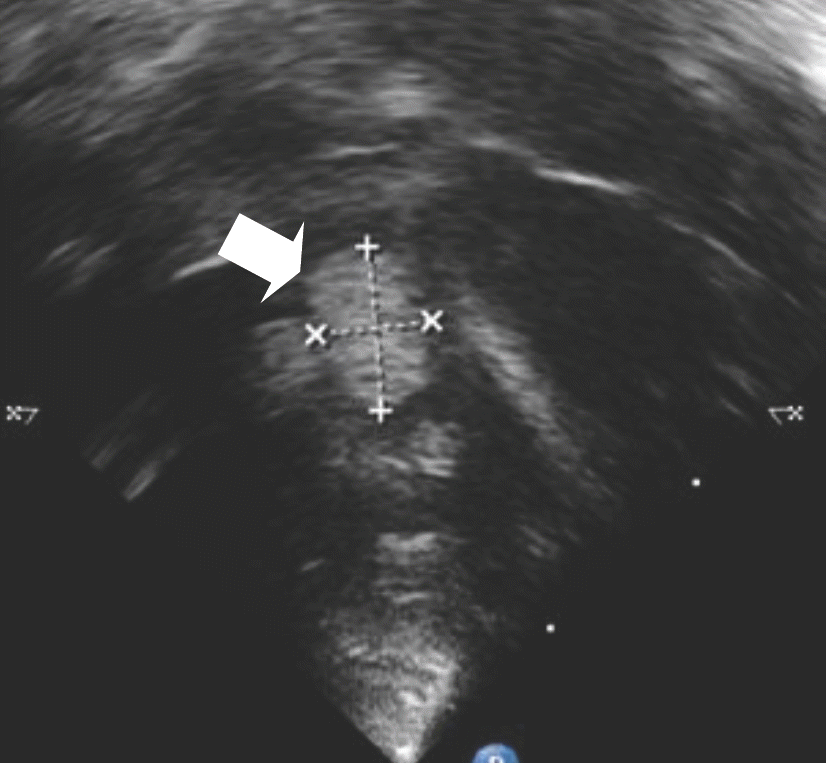Abstract
Methicillin-resistant Staphylococcus aureus (MRSA) is a critical source of infections in neonatal intensive care units. Early diagnosis and treatment are important due to the significant morbidity of MRSA infection. MRSA sepsis can be disseminated despite antibiotics, therefore the extent of the infection should be evaluated. Common complications of MRSA sepsis include infective endocarditis, pneumonia, osteomyelitis, meningitis, septic shock.Urgent evaluation of other possible suppurative complications in neoate are necessary. Therefore echocardiogram, chest X-ray, ophthalmic examination, brain sonography and spinal tapping are needed. In this study, we present a case of MRSA sepsis in a preterm infant, accompanied by endophthalmitis and endocarditis in spite of the early diagnosis and treatment.
References
2. Chun P, Kong SG, Byun SY, Park SE, Lee HD. Analysis of neonatal sepsis in one neonatal intensive care unit for 6 years. Korean J Pediatr. 2010; 53:495–502.

3. Moro M, De Toni A, Stolfi I, Carrieri M, Braga M, Zunin C. Risk factors for nosocomial sepsis in newborn intensive and intermediate care units. Eur J Pediatr. 1996; 155:315–22.

4. Healy CM, Palazzi DL, Edwards MS, Campbell JR, Baker CJ. Features of invasive staphylococcal disease in neonates. Pediatrics. 2004; 114:953–61.

5. La Gamma EF, Drusin LM, Mackles AW, Machalek S, Auld PA. Neonatal infections: an important determinant of late NICU mortality in infants less than 1,000 g at birth. Am J Dis Child. 1983; 137:838–41.
6. Beck-Sague CM, Azimi P, Fonseca SN, Baltimore RS, Powell DA, Bland LA, et al. Bloodstream infections in neonatal intensive care unit patients: results of a multicenter study. Pediatr Infect Dis J. 1994; 13:1111–6.
7. Bizzarro MJ, Raskind C, Baltimore RS, Gallagher PG. Seventy-five years of neonatal sepsis at Yale: 1928–2003. Pediatrics. 2005; 116:595–602.

10. Moise-Broder PA, Sakoulas G, Eliopoulos GM, Schentag JJ, Forrest A, Moellering RC. Accessory gene regulator group II polymorphism in methicillin-resistant Staphylococcus aureus is predictive of failure of vancomycin therapy. Clin Infect Dis. 2004; 38:1700–5.

11. Fowler VG, Sakoulas G, McIntyre LM, Meka VG, Arbeit RD, Cabell CH, et al. Persistent bacteremia due to methicillin-resistant Staphylococcus aureus infection is associated with agr dysfunction and low-level in vitro resistance to thrombin-induced platelet microbicidal protein. J Infect Dis. 2004; 190:1140–9.
12. Charles PG, Ward PB, Johnson PD, Howden BP, Grayson ML. Clinical features associated with bacteremia due to heterogeneous vancomycin-intermediate Staphylococcus aureus. Clin Infect Dis. 2004; 38:448–51.
13. Lowy FD. Staphylococcus aureus infections. N Engl J Med. 1998; 339:520–32.




 PDF
PDF ePub
ePub Citation
Citation Print
Print




 XML Download
XML Download